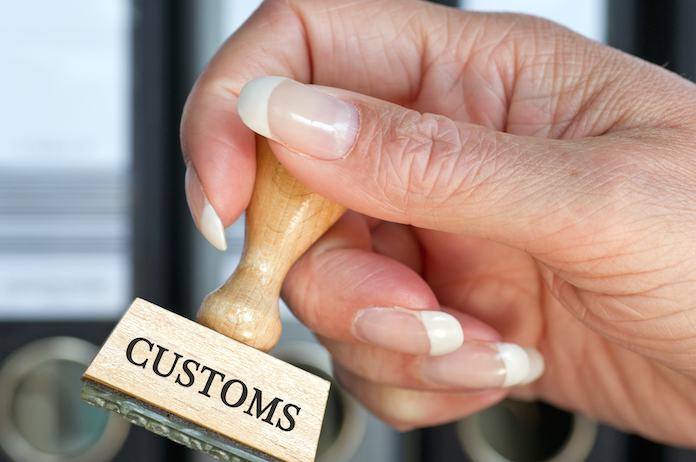Bolstering Cambodia's Customs Administration

An efficient customs administration is essential to the development and economic welfare of nations. It increases the revenue collected by the government, and protects the country from the illegal trafficking of prohibited or counterfeit goods. It also provides statistical information on foreign trade transactions needed for economic planning.
Essentially, an effective customs system encourages international trade by making transactions and the movement of cargo more transparent and efficient. To find out more about Cambodia’s own customs clearance process, B2B turns to experts from leading freight-forwarding companies operating in the Kingdom. This is what the country managers of Maersk Line, Damco, and RDL Logistics have to say about the Kingdom’s customs administration:
Not quite there, yet
The bad news is that Cambodia is not yet on par with more developed neighboring countries when it comes to efficiency in the customs administration system. On the bright side, the country is at least headed in the right direction. “Recently, we have heard and seen a number of government initiatives and efforts to modernise and simplify the trade flow as well as import/export procedures and processes in and out of the country,” comments Benny Ong, General Manager for global logistics solutions provider Damco. “We believe it will take some time for the country to catch up with fast-developing neighbors like Thailand and Vietnam; Cambodia may need to outrun the current pace of their neighbors in order to stay competitive.”

When it comes to efficiency in customs administration, Damco's Benny Ong believes it will take some time for Cambodia to catch up with Thailand and Vietnam Nuon Ratana, Sales & Marketing Manager at local freight-forwarder RDL logistics is of the same mind: “We find that the General Department of Customs and Excise (GDCE) and the Cambodia Import-Export Inspection and Fraud Repression Directorate General (Camcontrol) have improved their services and reduced complicated procedures. However, to be competitive among ASEAN countries, we believe the mechanism should be improved and updated further.” Although there remain a lot of rough edges, both Ong and Ratana agree the government has, in recent years, made great strides in improving customs clearance. Particularly, our contributors have highlighted the following programs and initiatives:
ASYCUDA
“The introduction of ASYCUDA was, undeniably, a great initiative from the government to support trade growth and enforce compliance with the regulations,” says Damco’s Ong. ASYCUDA is a computerised customs management system developed by the United Nations Conference on Trade and Development (UNCTAD) that aims at speeding up customs clearance through the introduction of computerisation and simplification of procedures, minimising administrative costs to the business community and the economies of countries. It also aims at increasing customs revenue by ensuring that all goods are declared, that duty/tax calculations are correct and that duty/exemptions and preferential regimes are correctly applied and managed.
According to the GDCE’s website, the ASYCUDA system has already been implemented at 54 major customs branches and offices throughout the Kingdom, covering almost 87 percent of the trade volume. “The customs clearance procedure has been improved with the introduction of the ASYCUDA system. This mechanism saves us time and money,” says RDL Logistics’s Ratana. “We are welcoming and strongly expecting more strategic decisions like this from the government to make Cambodia a more affordable country to invest in; at least, when it comes to customs clearance,” concludes Ong.
Handbook on Customs Clearance
In October last year, the GDCE, with support from the Asian Development Bank (ADB), published a guide to customs clearance in Cambodia. The document, titled Handbook on Customs Clearance, was the first publication of its kind in the Kingdom. The main purpose of the handbook was to disseminate information in order to increase public awareness on goods clearance procedures in Cambodia.

Lam Bui, of Maersk Line, believes the Handbook on Customs Clearance gives a good overview of customs clearance procedures The 100-page publication details the steps that must be followed by importers and exporters to successfully move their cargo in and out of the customs bureau. It also includes detailed descriptions of the different tariffs, duties and taxes that the importer/exporter will have to deal with, alongside other useful information that facilitates customs clearance for all parties involved.
The handbook was praised by the industry. Freight-forwarders generally consider it a useful tool to help navigate the sometimes befuddling customs clearance process. “It gives a good overview and consolidates information to increase public awareness on good clearance procedures and the timelines involved”, explains Lam Bui, Country Manager for the Cambodian branch of shipping giant Maersk Line.
Notification 1155
Maersk’s Bui brings to our attention Notification No. 1155 AKR, issued by the GDCE on August last year. The notice announces adjustments to customs procedures that aim to make it easier for the private sector to follow customs formalities. The notification instructs the different branches and bureaus within the GDCE to spread information detailing all the different steps involved in customs clearing as well as the standards of work expected in the sector. According to the notification, the time required to complete each step of the customs clearance process, together with the time necessary to complete the entire process, must be made publicly available.
In addition, the notice stipulates the creation of a hotline in each unit of the GDCE to facilitate the process of filing complaints and seeking clarification on any topic related to customs clearance. “This [notification] has enhanced the transparency and boosted the competitiveness of Cambodia with regards to trade facilitation, especially in connection with its integration into AEC”, comments Bui. This important notification, together with the establishment and implementation of the ASYCUDA system and the drafting of a handbook on customs clearance are all strong indication that the Cambodian government is aware of the flaws and limitations present in the current customs administration, and is working to amend it.
As the country continues to walk down the road of economic development, putting in place a reliable and efficient customs administration system is tantamount to its economic success. Fortunately, the country seems to be headed in the right direction.